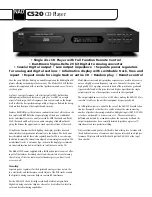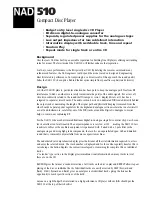
DATA FILER
146
You can use the
Track
field, with the aid of the [F2] function key, to select the track (from 1
to 16) the contents of which you intend to display.
The current association will be displayed in the
Port
field. To change the association, press
the [F3] function key; you can turn the encoder to choose from the following options:
o
Port=INT
, the data relating to the selected track are sent only to the internal sound
generator (default condition).
o
Port=EXT
, the data relating to the track are sent only to the [MIDI OUT] port.
o
Port=BOTH
. the track data are sent both to the internal sound generator and to the
[MIDI OUT] port.
o
Port=NONE
, with this setting the data relating to the track are not sent. The selected
track will therefore be eliminated from the playback.
When the operation is complete, the [ESC] key can be pressed to exit from the video page in
question; all the modifications will be saved automatically. On exit from the function, the current
song will be reloaded to implement the modifications made to it.
TYPES OF MIDI MESSAGES
•
Note messages: message relating to the note to be performed.
•
Program Change: this message is used for selection of the timbres to be applied on
each track. Once you know the correspondence between the number assigned to the
memory and the Program Change number, you can select the type of sound you require.
Refer to the appendix to this manual for details of the Program Change
ð
Timbre
assignations.
•
Control Change: control messages used to add expression to the performance, allowing
setting of the parameters of the timbre, including for example the volume (CC n.7), the
amount of reverb (CC n.91), activation of the Damper pedal (CC n.64), etc...
If Control Change n.°91 is received, for example, the instrument will apply the specified
amount of reverb effect to the sound.
•
System Exclusive system messages sent as strings of bytes which affect the general
settings of the sound generator or regulations not possible with other commands.
•
Real Time: high priority messages used for command or synchronisation operations.
These messages include the MIDI CLOCK (synchronisation of two or more devices
connected together on the same time base), and START, STOP and CONTINUE messages
for remote control of the instrument’s functions.
















































